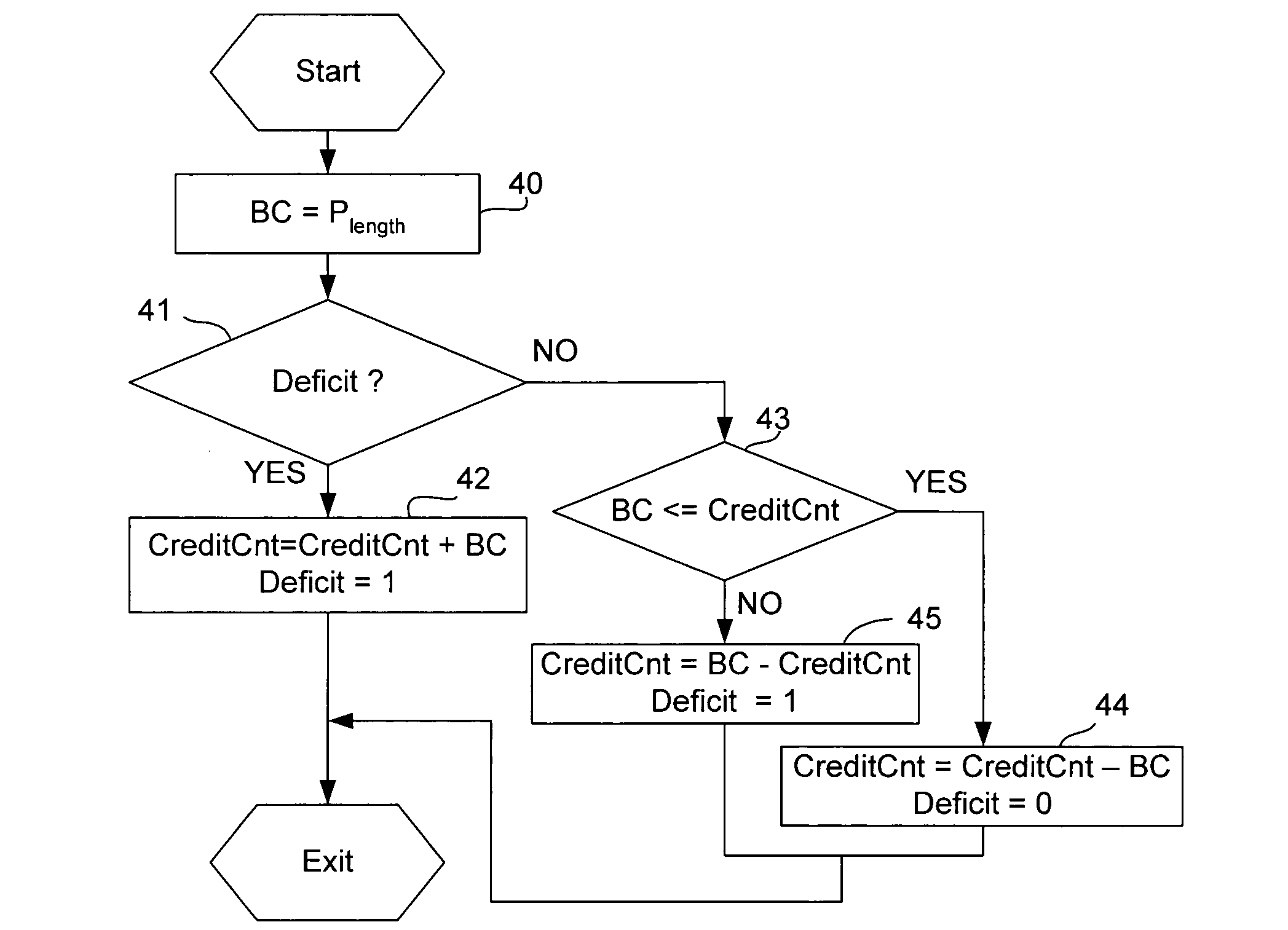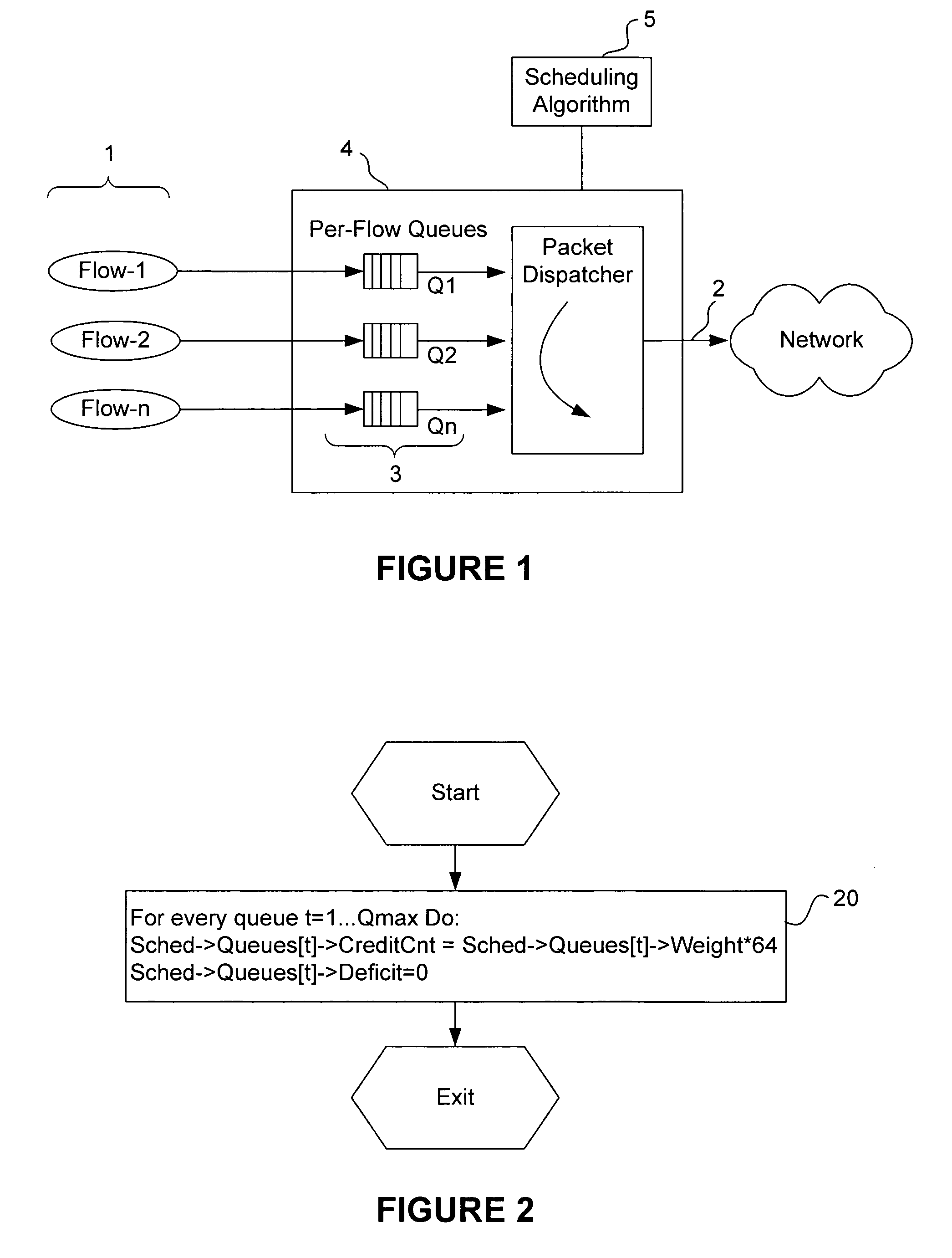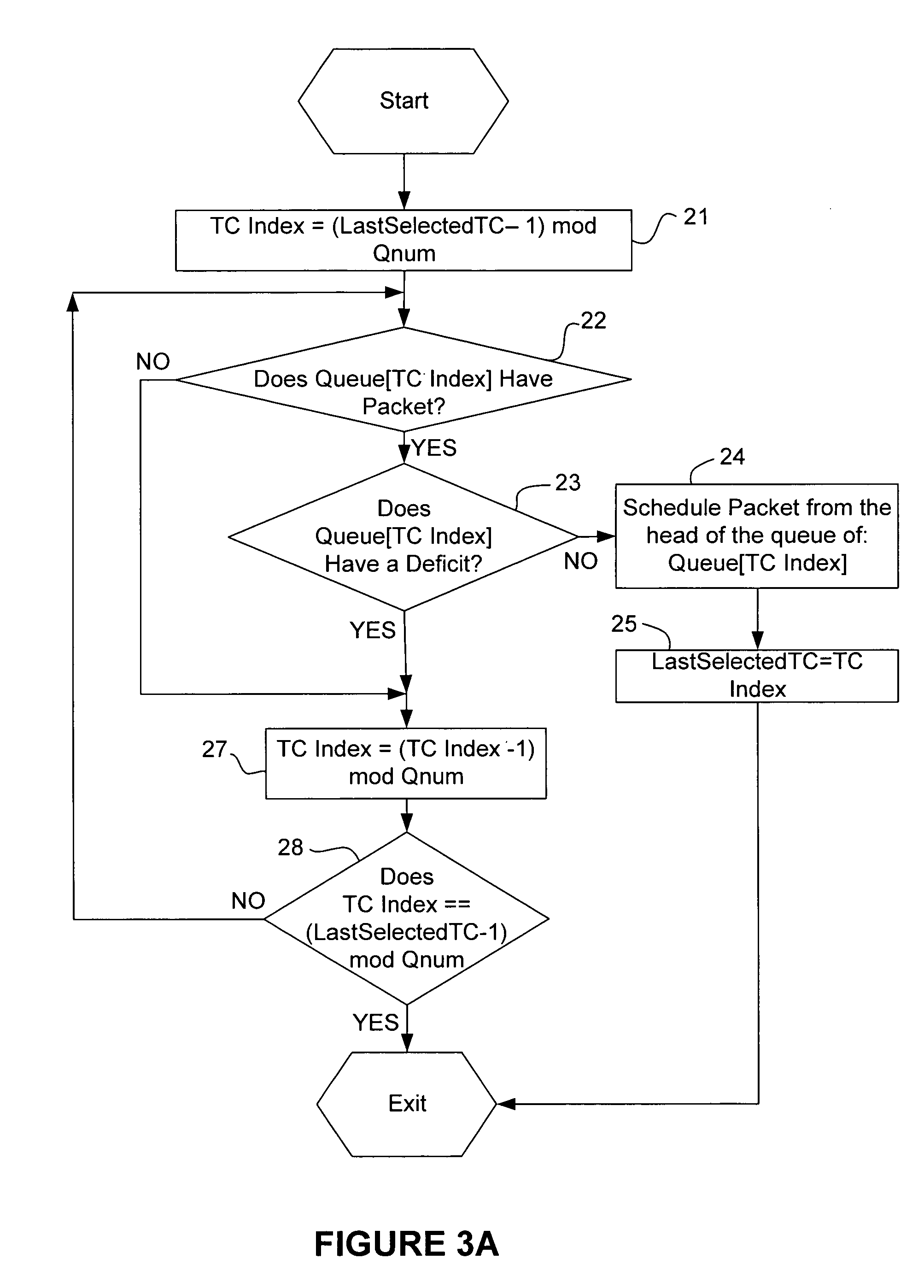Method and apparatus for packet scheduling
a packet scheduling and packet technology, applied in the field of network communication systems, can solve the problems of inability to implement, inability to achieve, and inability to achieve practical solutions, so as to reduce congestion, reduce packet losses, and allocate bandwidth resources fair
- Summary
- Abstract
- Description
- Claims
- Application Information
AI Technical Summary
Benefits of technology
Problems solved by technology
Method used
Image
Examples
Embodiment Construction
[0025]FIG. 1 illustrates a block diagram of a packet scheduler 4 in accordance with the present invention. The scheduling scenario considered here arises when a number of packet streams, called flows 1, share an output link at a switch. Each flow 1 maintains a separate queue 3 of its packets waiting for access to the transmission link 2. The packet scheduler 4 operates in accordance with a scheduling algorithm 5 to schedule the transmission of packets, so as to achieve a fair allocation of the bandwidth resources on the output link 2, reduce congestion and lower packet losses. The details of algorithm 5 are discussed in more detail below.
[0026]The packet scheduling algorithms can be realized in software recorded on a computer-readable storage medium. The invention could also be implemented on hardware, such as for example application specific integrated circuits (ASIC), programmable logic arrays (PLA), special purpose integrated circuits (ICs), digital signal processors (DSPs) or an...
PUM
 Login to View More
Login to View More Abstract
Description
Claims
Application Information
 Login to View More
Login to View More - R&D
- Intellectual Property
- Life Sciences
- Materials
- Tech Scout
- Unparalleled Data Quality
- Higher Quality Content
- 60% Fewer Hallucinations
Browse by: Latest US Patents, China's latest patents, Technical Efficacy Thesaurus, Application Domain, Technology Topic, Popular Technical Reports.
© 2025 PatSnap. All rights reserved.Legal|Privacy policy|Modern Slavery Act Transparency Statement|Sitemap|About US| Contact US: help@patsnap.com



